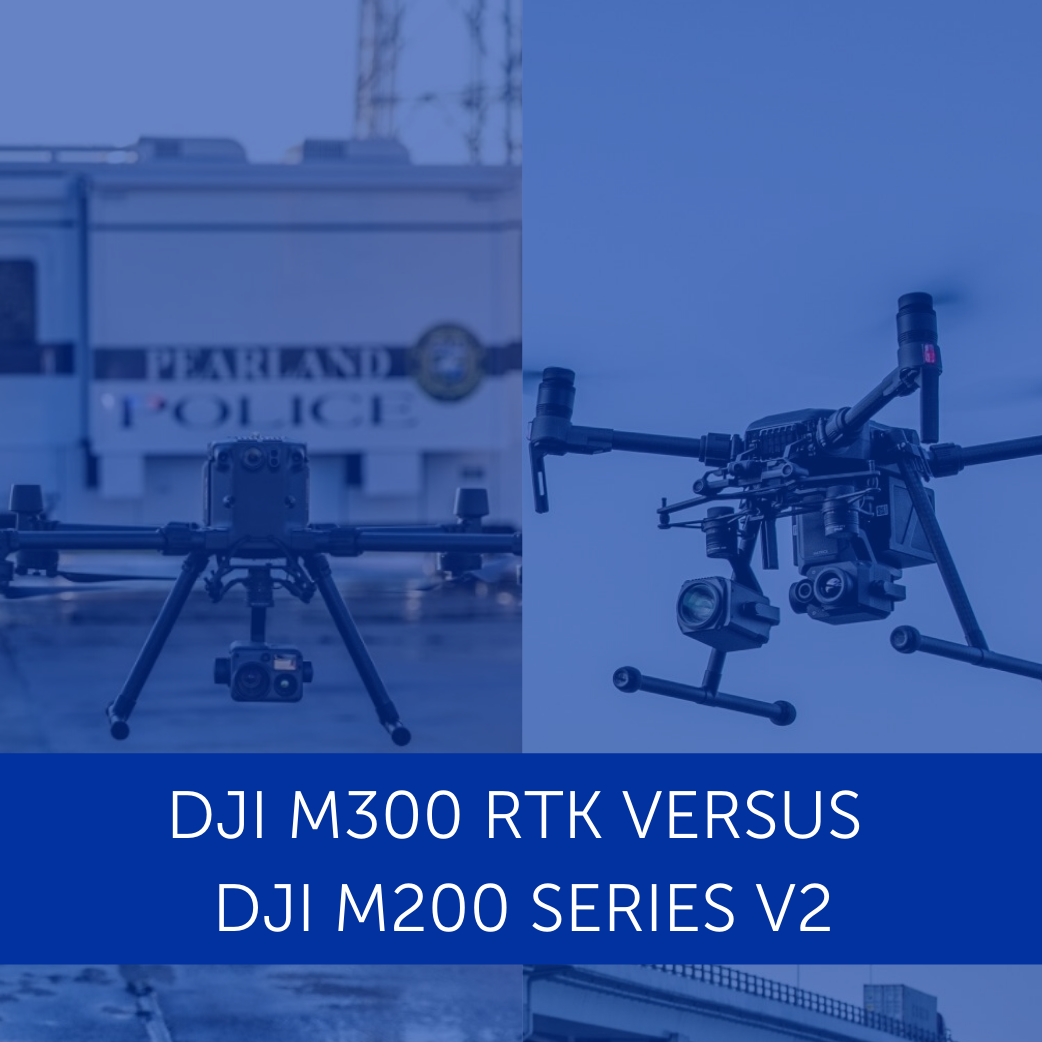
Products
DJI M300 RTK v DJI M200 Series
In-depth comparison between the DJI M300 RTK and M200 Series V2 range. Which are best for commercial drone missions and should you upgrade to this new platform? ... Read More
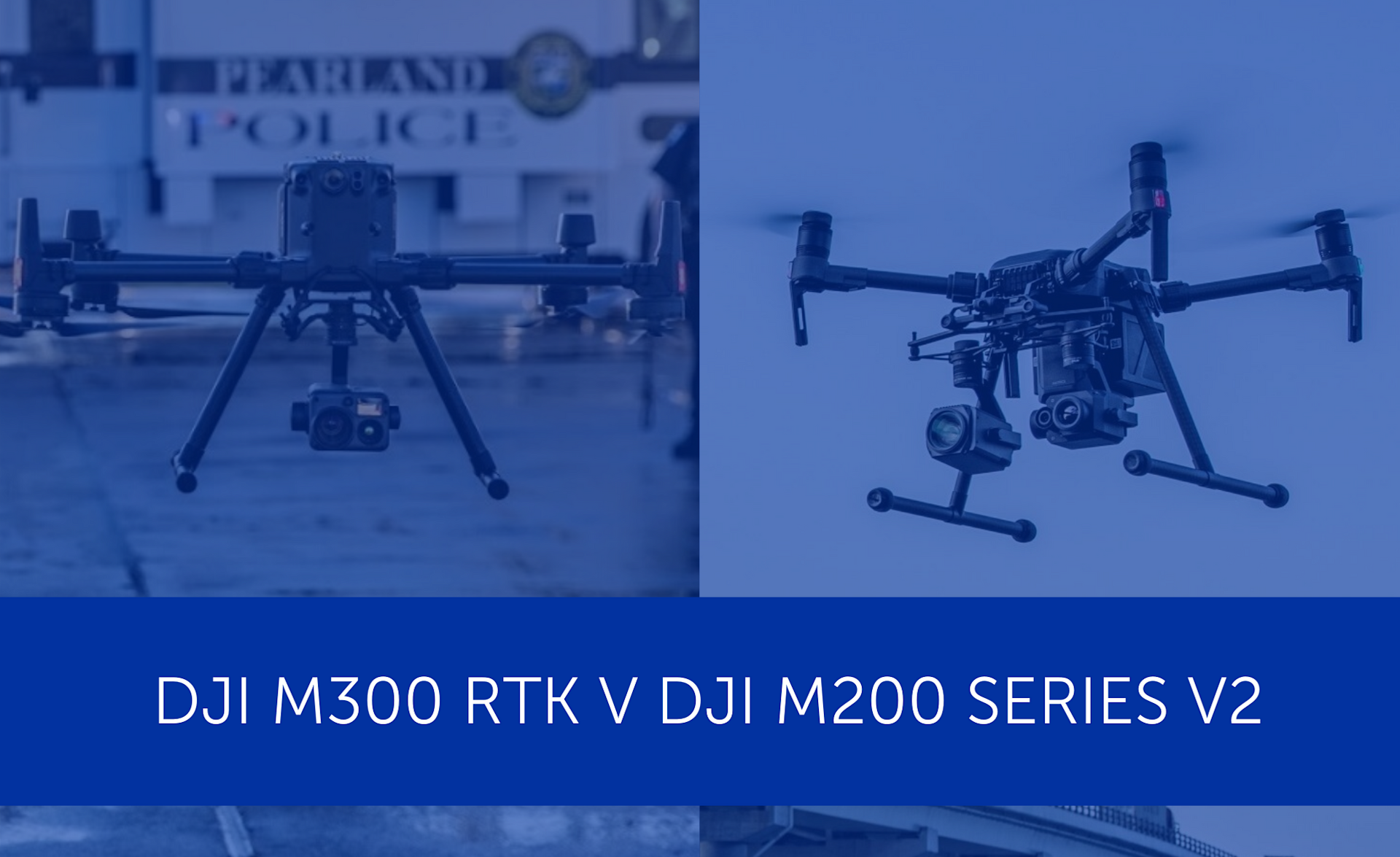
When DJI originally launched the M200 Series in February 2017, it heralded a new era for commercial drone operations. This was followed last year by the M200 Series V2, a rebooted version of this purpose-built solution which has become synonymous with enterprise UAV missions.
But now, DJI has unveiled the M300 RTK, the next generation in the Matrice family. And, in a similar fashion to its older siblings, this new drone is truly revolutionary.
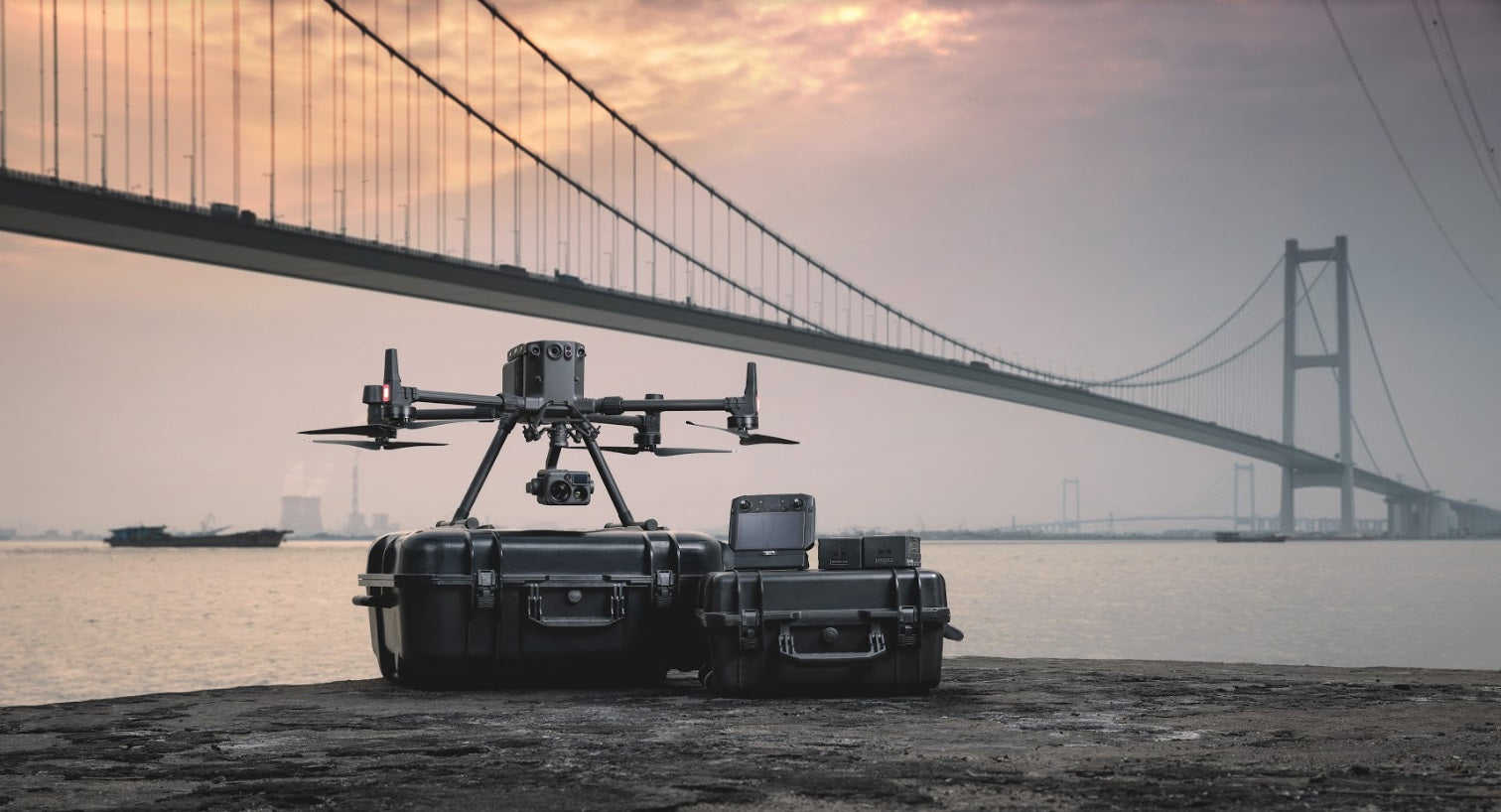
The DJI M300 RTK.
Building on the solid foundations of the M200 Series, the M300 RTK redefines what is possible for commercial drone operators, from longer flight times, to enhanced safety features, and a higher IP rating.
Given its impressive specs, companies around the world will no doubt clamour to add this drone to their fleets. But if you already own an M200 drone, should you consider an upgrade? And how does it really stack up against the existing Matrice range?
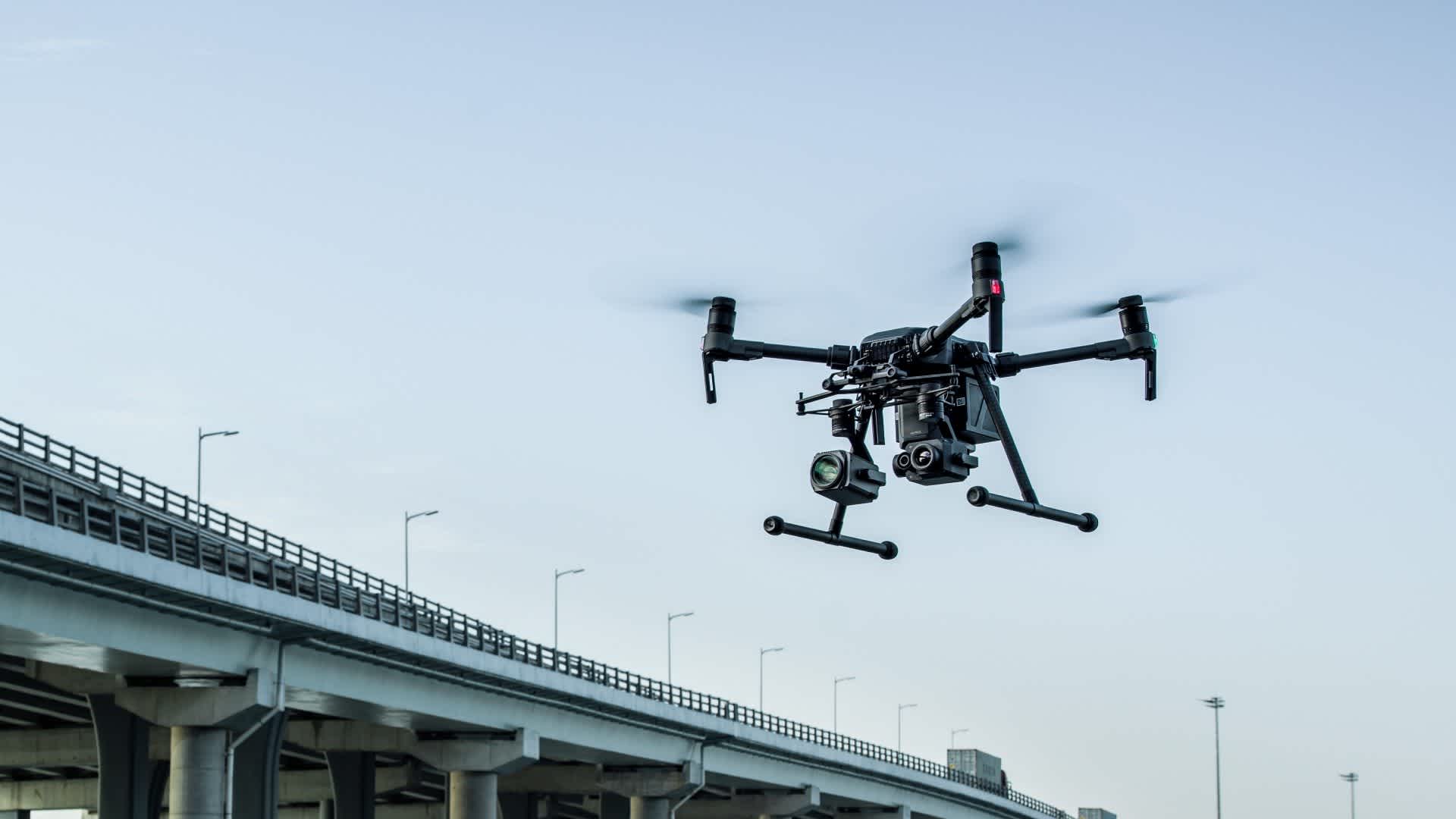
The M200 Series V2.
In this Heliguy Insider post, we take an in-depth look at the M300 RTK and compare it against the drones in the M200 Series V2, namely the M200, M210 and M210 RTK.
DJI M300 RTK v DJI M200 Series: Key Specifications
Before we take a deep dive into the differences between the M300 RTK and the M200 Series V2, let's check out some of the key specifications at a glance.
M300 RTK | M200 | M210 | M210 RTK | |
Dimensions | Unfolded, propellers excluded: 810×670×430 mm Folded, propellers included: 430×420×430 mm | Unfolded, propellers and landing gears included: 883×886×398 mm Folded, propellers and landing gears excluded: 722×247×242 mm | Unfolded, propellers and landing gears included: 883×886×398 mm Folded, propellers and landing gears excluded: 722×282×242 mm | Unfolded, propellers and landing gears included: 883×886×427 mm Folded, propellers and landing gears excluded: 722×282×242 mm |
Weight | Approx. 6.3kg (with two TB60 batteries, and single downward gimbal) | Approx. 4.69kg (with two TB55 batteries) | Approx 4.8kg (with two TB55 batteries) | Approx. 4.91kg (with two TB55 batteries) |
Max Payload | 2.7kg | 1.45kg | 1.34kg | 1.23kg |
Max Takeoff Weight | 9kg | 6.14kg | 6.14kg | 6.14kg |
Max Speed | S mode:23 m/s, 51.4mph | S-mode/A-mode 22m/s, 50.3 mph; | Dual Downward Gimbal/Single Upward Gimbal): 20.5m/s, 45.9 mph. Single Downward Gimbal: 22.4m/s, 50.3 mph | Dual Downward Gimbal/Single Upward Gimbal): 20.5m/s, 45.9 mph; Single Downward Gimbal (Gimbal ConnectorI): 22.4/s, 50.3 mph; |
Max Flight Time (No Payload) | 55 min | 38 min | 34 min | 33 min |
Supported DJI Gimbals | Zenmuse XT2 /XT S /Z30 /H20 /H20T | Zenmuse X4S/X5S/X7/XT/XT2/Z30 | Zenmuse X4S/X5S/X7/XT/XT2/Z30 | Zenmuse X4S/X5S/X7/XT/XT2/Z30 |
Supported Gimbal Configurations | Single Downward Gimbal, Dual Downward Gimbals, Single Upward Gimbal, Upward and Downward Gimbals, Triple Gimbals | Single Gimbal, Downward | Single Downward Gimbal, Dual Downward Gimbals, Single Upward Gimbal | Single Downward Gimbal, Dual Downward Gimbals, Single Upward G |
IP Rating | IP45 | IP43 | IP43 | IP43 |
Operating Temperature | -20°C to 50°C | -20°C to 50°C | -20°C to 50°C | -20°C to 50°C |
Max Wind Resistance | 15m/s | 12m/s | 12m/s | 12m/s |
Max Descent Speed | 7m/s | 3m/s | 3m/s | 3m/s |
Obstacle Sensing | Forward, backward, left, right, upwards, downwards | Forward, Downward, Upward | Forward, Downward, Upward | Forward, Downward, Upward |
Max Transmitting Distance | NCC/FCC:15 km CE/MIC:8 km SRRC:8 km | NCC/FCC: 8 km; CE/MIC: 5 km; SRRC: 5 km | NCC/FCC: 8 km; CE/MIC: 5 km; SRRC: 5 km | NCC/FCC: 8 km; CE/MIC: 5 km; SRRC: 5 km |
OcuSync | OcuSync Enterprise | OcuSync 2.0 | OcuSync 2.0 | OcuSync 2.0 |
Battery | TB60 | TB55 | TB55 | TB55 |
Battery Net Weight | Approx. 1.35kg | Approx 885g | Approx 885g | Approx 885g |
.wp-block-table.is-style-stripes tr:first-child { background: #00aece!important; font-weight: bold; color: white; border: 1px solid white; padding: 6px!important; } .wp-block-table.is-style-stripes tr:first-child td { border: 1px solid white; padding: 6px!important; text-align: center; } .wp-block-table.is-style-stripes tr td:first-child { background: #00aece!important; font-weight: bold; color: white; border: 1px solid white; padding: 6px; } .wp-block-table.is-style-stripes tr td { padding: 6px; } .wp-block-table.is-style-stripes strong { color:white; } .wp-block-table.is-style-stripes tbody { text-align: left!important; }
DJI M300 RTK v DJI M200 Series: IP Rating
One of the key improvements of the M300 is the Ingress Protection (IP) Rating.
The M300 RTK is IP45, compared to the M200 Series V2’s IP43 rating.
This ensures that the M300 RTK is more tolerant of wet weather.
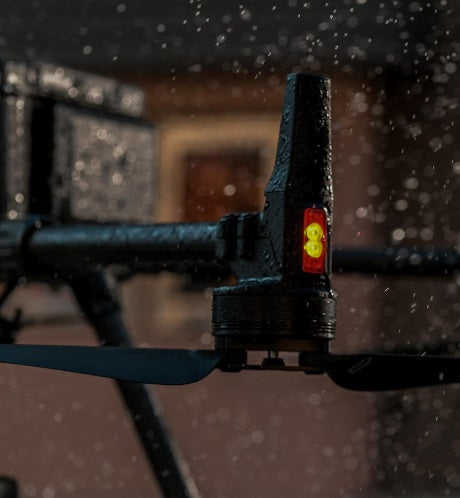
The DJI M300 RTK has an IP rating of IP45.
While the M200 Series V2 can operate in light rain (less than 10mm a day), the M300 RTK is protected against low-pressure jets of water. DJI says that the M300 RTK can withstand rain of 100mm/24h.
So while this is not a complete waterproofing for the M300 RTK, it is certainly a more robust aircraft than the M200 Series V2 and can handle wetter conditions.
As for the other part in the IP rating (ie the first digit, which is 4), all of the drones are the same, meaning they are protected against solid objects greater than 1mm, such as screws and wires.
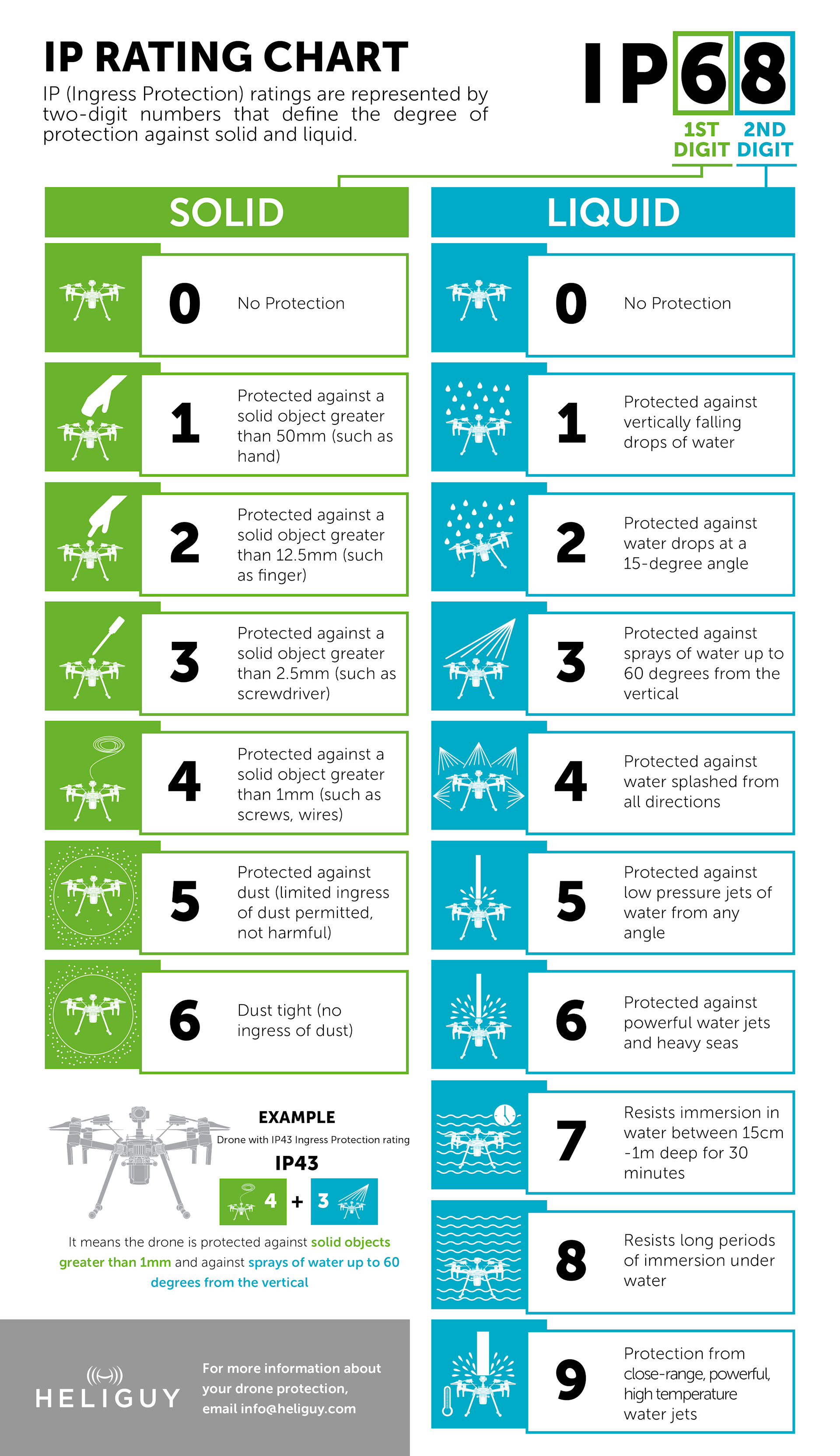
When it comes to handling difficult conditions, the M300 RTK has a wind-speed resistance of 15m/s, whereas all of the M200 Series V2 drones have a resistance of 12m/s.
However, the M300 RTK and the M200 Series V2 can all operate in temperatures ranging from between -20°C to 50°C, making them extremely durable aircraft.
DJI M300 RTK v DJI M200 Series: Flight Time
One of the key selling points of the M300 RTK is its increased endurance.
Yes, DJI boasts that it has a maximum flight time of 55 minutes without a payload, compared to the M200’s 38 minutes, the M210’s 34 minutes, and the M210 RTK’s 33 minutes.
It's an impressive stat, but let's face it, when it comes to the Matrice range, the drone is nothing without its associated payloads.
So, how do these drones stack up when integrated with sensors.
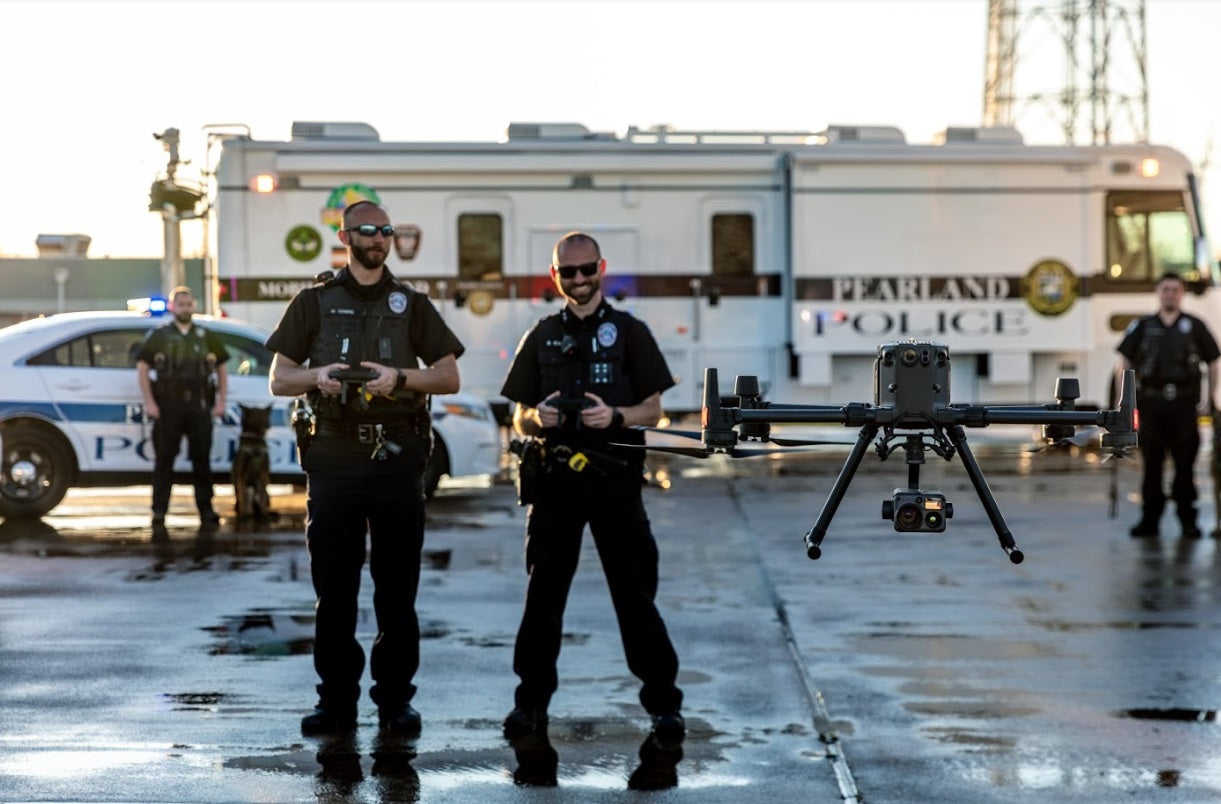
The DJI M300 RTK can be integrated with a range of sensors.
Well, again, the M300 RTK comes out on top. When it is loaded to full capacity, it can last for approximately 31 minutes - longer than the M200 drones.
To compare how the drones manage with the same payloads (Z30/XT2), let's take a look at the table below, which again demonstrates the M300 RTK's superior performance.
M300 RTK | M200 V2 | M210 V2 | M210 RTK V2 | |
Z30 | 46 mins | 32 mins | 28 mins | 27 mins |
XT2 | 45 mins | 31 mins | 28 mins | 27 mins |
Furthermore, the DJI M300 RTK can stay in the air for 39 minutes when equipped with an XT2 and the new H20 camera - giving you a thermal (XT2), zoom, wide-angle, and laser rangefinder (H20) solution. Or, you could connect a H20T sensor to the M300 RTK - which provides all of the above in one camera - and manages a maximum flight time of 43 minutes
In comparison, the M210 V2 and the M210 V2 RTK can muster 24 minutes and 22 minutes of flight time respectively when integrated with an XT2 and Z30; a set-up which offers thermal, zoom, and visual sensor capabilities.

A Matrice 200 Series drone.
DJI M300 RTK v DJI M200 Series: Payloads
Sticking with the payload theme, the M300 RTK once again comes out on top for capacity, maximum takeoff weight, number of payloads, and gimbal configurations.
Firstly, payload capacity. The M300 RTK can lift up to 2.7kg-worth of payload. This compared to the 1.45kg of the M200 V2, the 1.34kg of the M210 V2, and the 1.23kg of the M210 RTK V2.
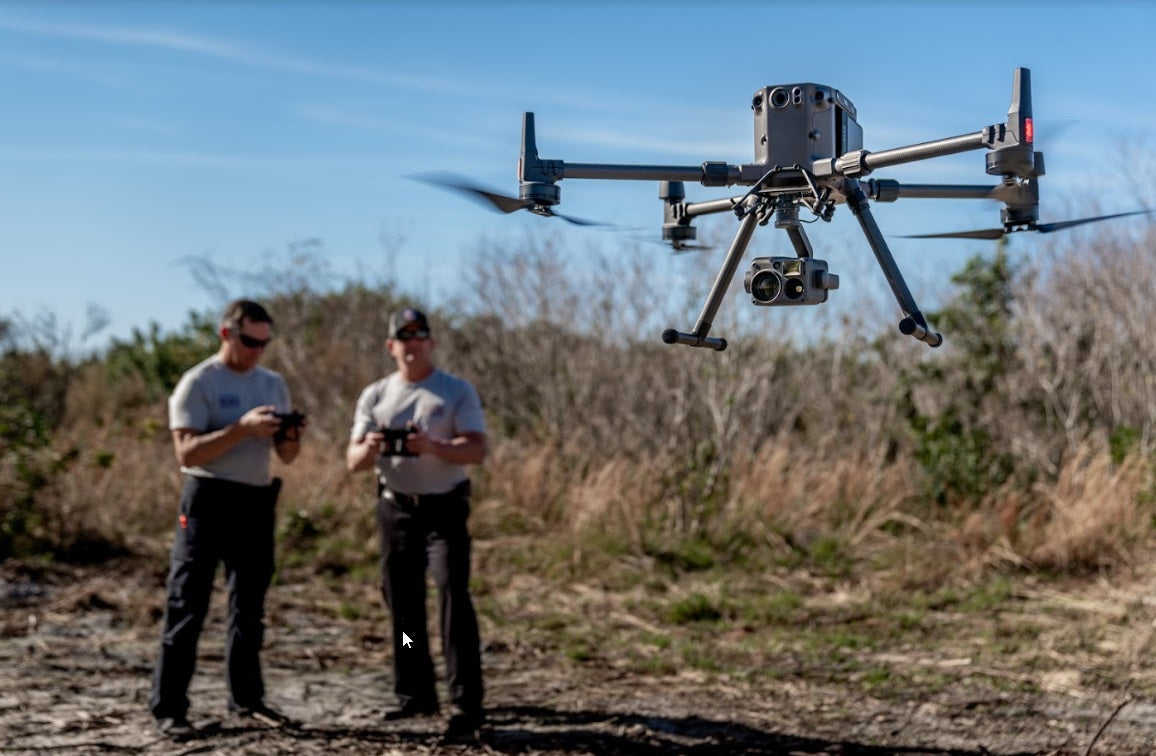
The DJI M300 RTK has a larger payload capacity, compared to the drones in the M200 Series V2.
It's no surprise, therefore, that the M300 RTK can carry more mass overall, with an impressive maximum take-off weight of 9kg, compared to the 6.14kg afforded by the M200 Series V2.
There's also another string to the M300 RTK's bow, and that's the ability to be able to carry up to three payloads at once - a first for the Matrice Series, offering enhanced efficiency and output. With this in mind, the gimbal configurations for the M300 RTK are:
Single Downward Gimbal
Dual Downward Gimbals
Single Upward Gimbal
Upward and Downward Gimbals
Triple Gimbals (two downward, one upward)
In comparison, the M200 V2 is the most limited of the bunch, confined to carrying just one payload in the downward gimbal position.
The M210 and M210 RTK, meanwhile, are somewhere in between; able to carry two payloads and catering for a number of different configurations, such as Single Downward Gimbal, Dual Downward Gimbals, and Single Upward Gimbal.
So, with this in mind, what payloads can these drones actually carry?
Well, the headline is that the M300 RTK can be integrated with two new sensors, engineered exclusively for this drone.
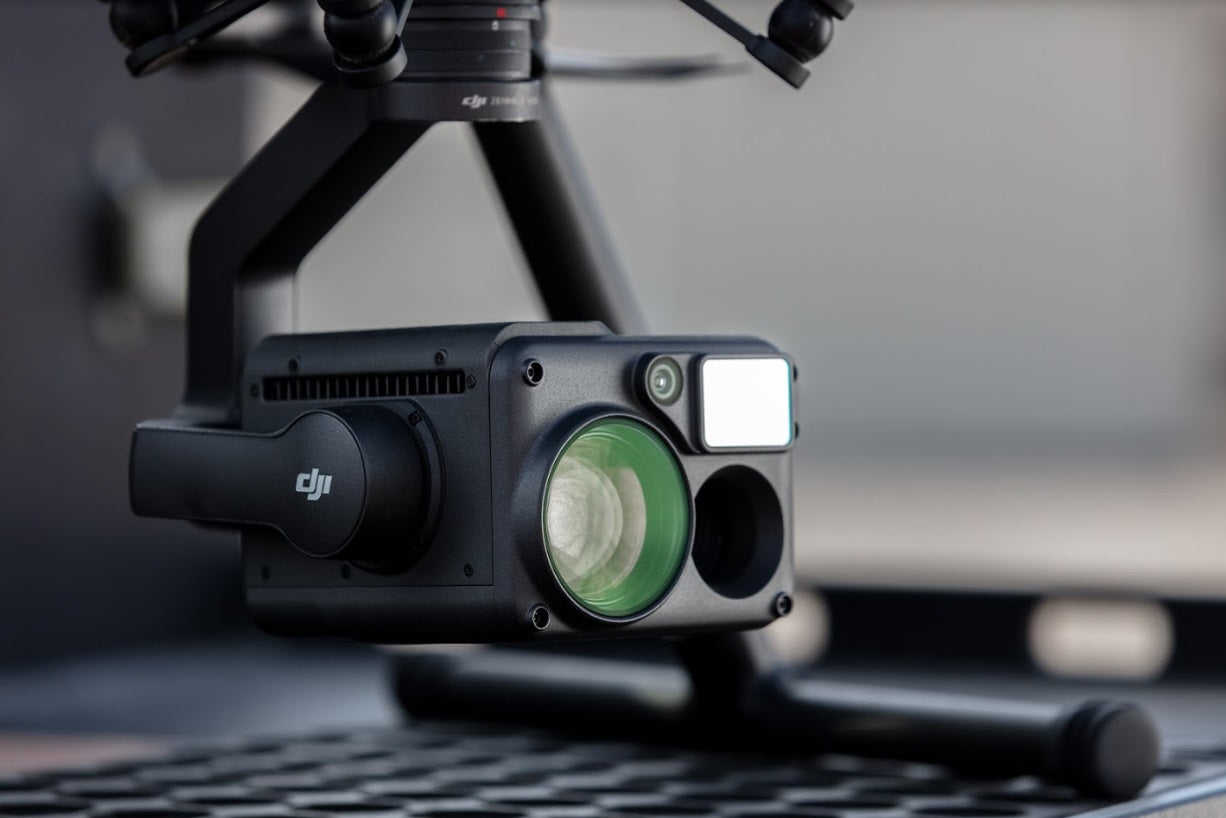
The H20T quad-sensor solution.
Indeed, the Zenmuse H20 and the H20T are game-changing multi-sensor solutions, designed to maximise efficiency and performance, and are worthy of a standalone product launch.
In a nutshell, the H20 is a triple-sensor solution, packing in a 20MP zoom camera (featuring a 23× Hybrid Optical Zoom and a whopping 200× Max Zoom), a 12MP wide camera, and a laser rangefinder with a range of 1200m.
Meanwhile, the H20T is a quad-sensor solution, featuring all of the capabilities of the H20, but with a 640x512px radiometric thermal camera to boot.
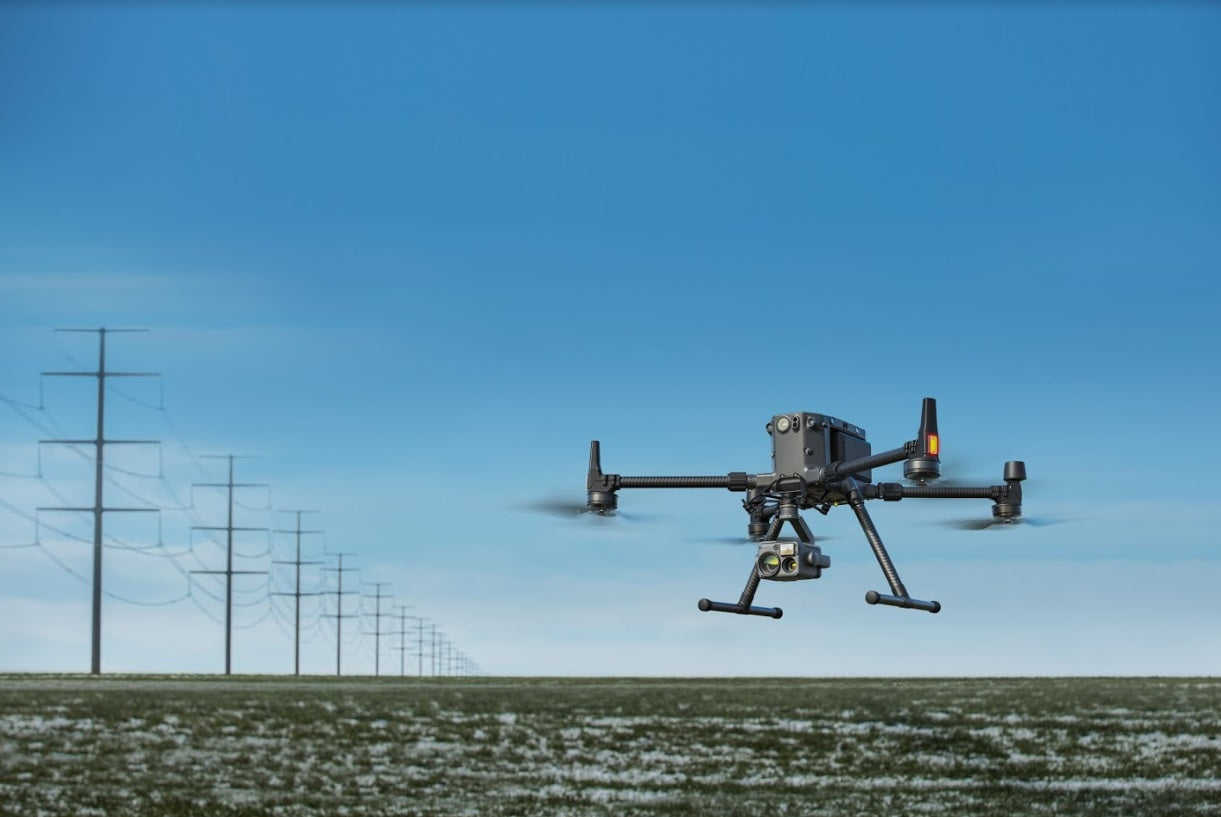
With its exclusive payloads, the DJI M300 RTK is a powerful tool for enterprise.
These sensors - both IP44 rated - are an impressive addition to the DJI eco-system and will offer a comprehensive all-in-one solution for many commercial drone pilots.
And as was highlighted previously, an M300 RTK integrated with a H20T sensor will afford double the maximum flight time of an M210 or M210 RTK V2 carrying the equivalent XT2/Z30 configuration - and with the added bonus of a laser rangefinder.
The versatile M300 RTK isn't all about the new payloads though, because it can also be integrated with the well-renowned Z30 and XT2 sensors, as well as the XT S. Likewise, all three drones in the M200 Series V2 range can carry these sensors.
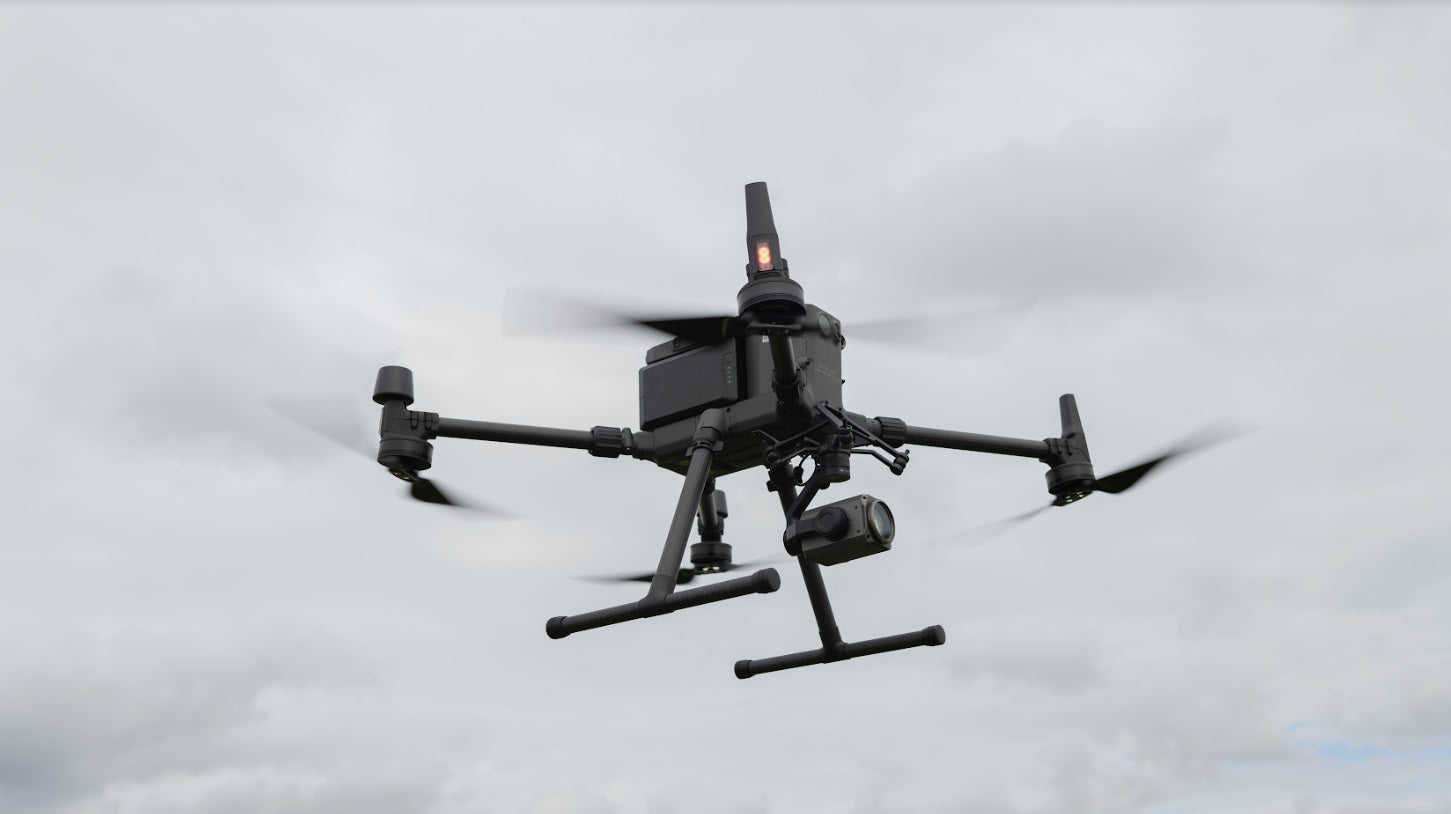
DJI M300 RTK with a Z30 zoom camera.
However, one of the big differences is that while the M200, M210 and M210 RTK V2s can utilise the X4S, X5S, and X7, the M300 RTK cannot.
This means that, unless you take advantage of the M300 RTK's third-party payload compatibility and find yourself a suitable sensor for surveying, this new drone will not be your first-choice companion for this type of mission. In contrast, the M210 RTK V2 has become a popular tool for surveying, when accompanied with the high-spec X7.
Of course, if surveying is your thing, there is always the option of turning to the DJI enterprise ecosystem, and deploying either the dedicated mapping drone, the Phantom 4 RTK, or the M600 Pro strapped with something like a Sony RX1R II sensor (integrated by the Heliguy tech team), on your site.
To rewind slightly, both the M200 Series V2 and the M300 RTK can be equipped with third-party payloads. This opens huge potential for operators of all of these drones, but perhaps none more so than with the M300 RTK.
For example, carrying the exclusive H20T - with the thermal, zoom, laser rangefinder and wide-angle lens - alongside the Wingsland Z15 Bright Spotlight provides a new level of efficiency for the likes of public safety officials and search and rescue teams.
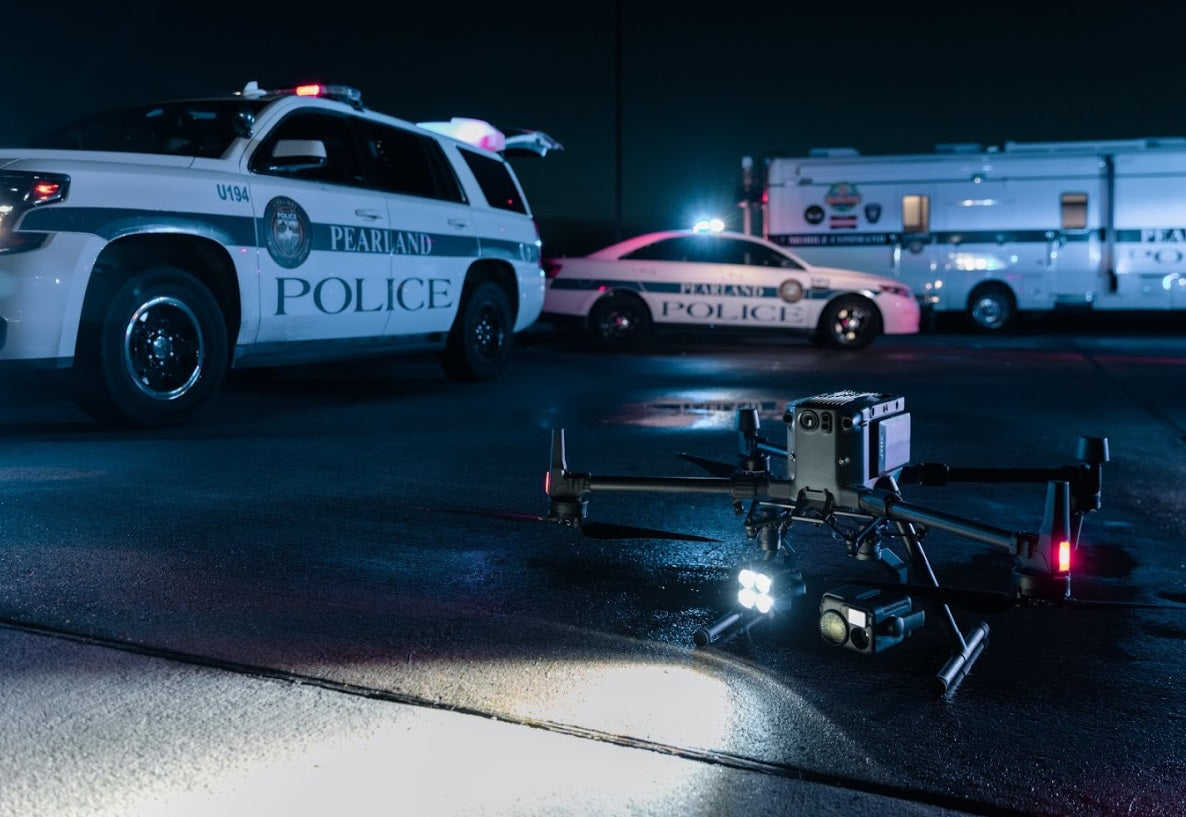
Integrate third-party sensors to the DJI M300 RTK to enhance the effectiveness of your mission.
DJI M300 RTK v DJI M200 Series: Maximum Transmission Range
The M300 RTK benefits from DJI's new OcuSync Enterprise Transmission System, capable of achieving a maximum transmission range of 15km (FCC), or 8km (CE). Thanks to OcuSync Enterprise, pilots can take advantage of triple video channel support and benefit from 1080p HD image transmission.
In contrast, the M200 Series V2 has OcuSync technology, which yields a maximum transmission range of 8km (FCC), and 5km (CE).
To ensure your data transmission is kept secure, all four drones benefit from AES-256 encryption.
DJI M300 RTK v DJI M200 Series: Safety Features
The M300 RTK provides a new-level of drone safety.
To enhance in-flight safety and aircraft stability, dual-vision and TOF sensors appear on all six sides of the aircraft, offering a maximum detection range of up to 40m, with options to customise the aircraft’s sensing behavior via the DJI Pilot App. Even in complex operating environments, this six Directional Sensing and Positioning system helps keep the aircraft and the mission safe.
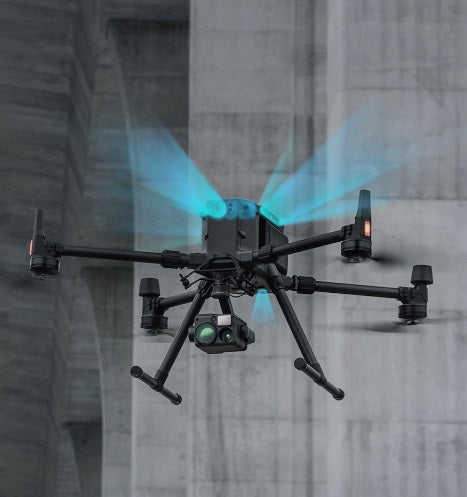
The DJI M300 RTK is packed with sensors to enhance flight safety.
The drone also benefits from Auxiliary LED lights and anti-collision beacons (up and down) and features DJI’s AirSense technology.
To further increase safety, the M300 RTK’s ESC is located in the body of the aircraft. The drone also benefits from Dual Battery provision - if one battery fails, the drone can still return home safely. It can also carry out a three-propeller emergency landing, helping you to maintain control of the aircraft, especially in the case of a motor malfunction.
A useful new feature with the M300 RTK is its integrated Health Management System. This feature displays the current status of all systems, notification logs, and a preliminary troubleshooting guide. Users will also be able to access crucial information such as flight logs, mileage and tips on aircraft maintenance and care. It really is a useful, and detailed feature to have.
The drones in the M200 Series V2 don't have all of those features, but they do still have three directional sensors (front, bottom and upper) and top and bottom anti-collision beacons, as well as utilising DJI’s AirSense technology. And make no mistake, the M200 Series V2 drones are still an incredibly reliable option.
DJI M300 RTK v DJI M200 Series: Batteries
With this new drone comes a new battery, in the form of the TB60 Intelligent Flight Battery. The M200 Series V2 utilises TB55 batteries.
An advantage of the high-capacity TB60s is that they are hot-swappable, meaning that operators can change batteries without powering off - a huge benefit during time-critical missions.
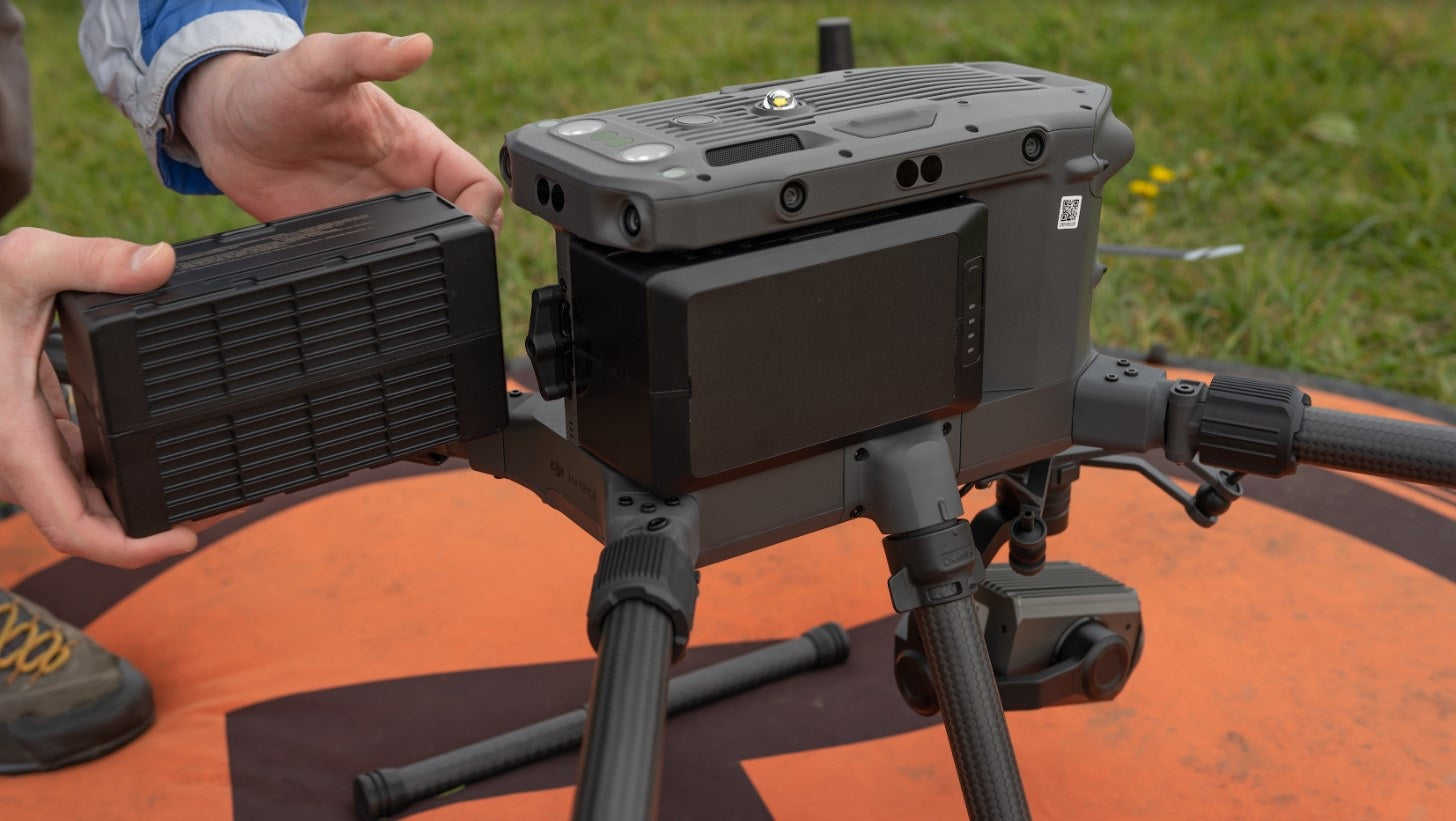
The TB60 batteries are hot-swappable.
This is aided further still by the new Battery Station, which can store and charge up to eight TB60 flight batteries and four remote controller batteries.
This rapid-charging solution can power two TB60 batteries to full capacity in just an hour, enabling non-stop continuous flights with your DJI M300 RTK.
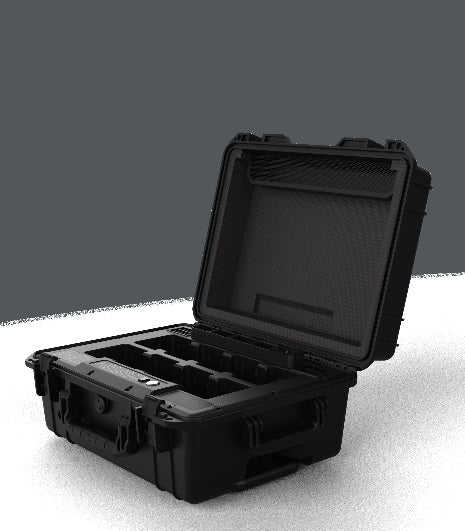
The charging station.
In contrast, when using an IN2CH charging hub, it takes two hours and 24 minutes to fully charge 2 TB55 batteries for the M200 Series V2
DJI M300 RTK v DJI M200 Series: Intelligent Features
Unsurprisingly, the M300 RTK benefits from some incredible features, which enhances mission efficiency and really sets it apart from the M200 Series V2.
RTK: Firstly, as its name suggests, the DJI M300 RTK comes with RTK capability as standard. In comparison, you need to purchase the M210 RTK to take advantage of this positional accuracy.
The D-RTK 2 Mobile Station for Matrice 200 Series V2 and Phantom 4 RTK can be upgraded to support M300 RTK, to help you gain improved relative accuracy with centimetre-level precision positioning data.
Advanced Dual Control: One of the most exciting features of the DJI M300 RTK is the advanced dual control. This enables operators to switch aircraft control in-flight, greatly aiding complex or long-distance missions.
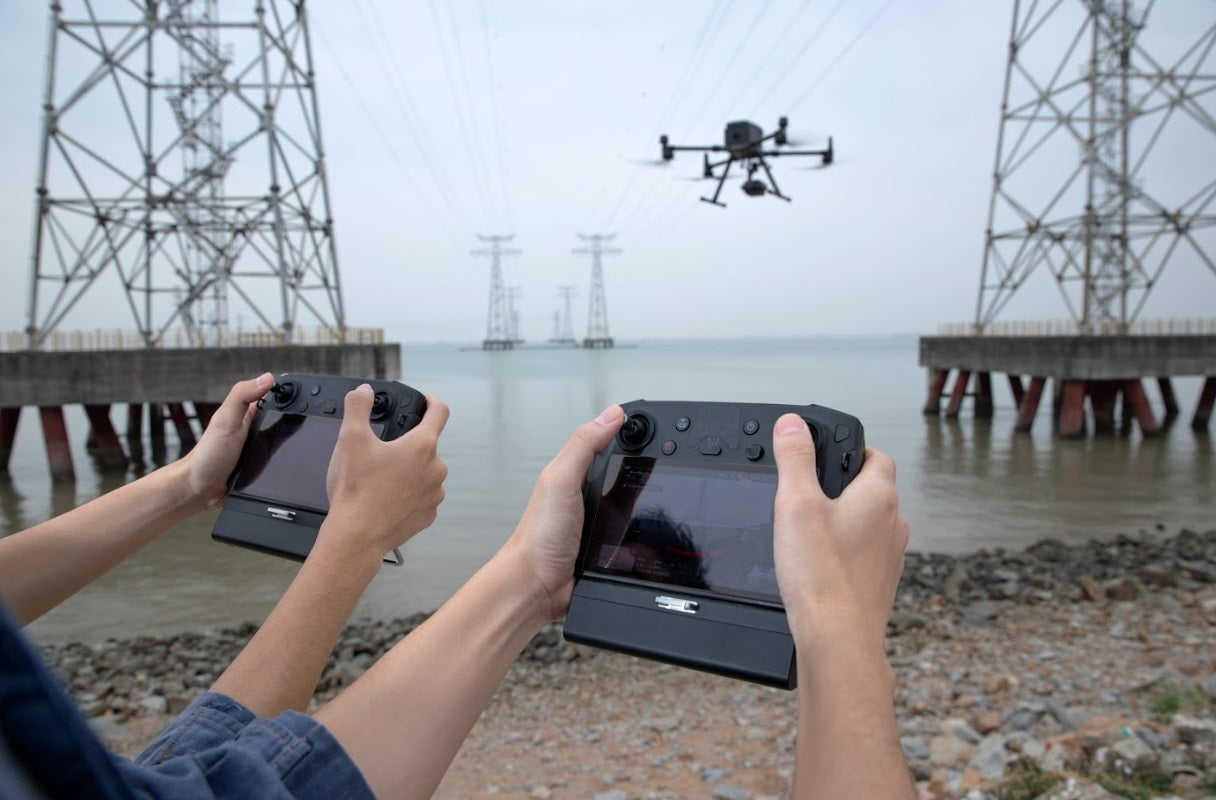
Take advantage of dual control with the DJI M300 RTK.
This option means that, with just a single tap, either operator can obtain control of the aircraft or payload. This enables the drone to take-off and land in different locations with different pilots and creates new possibilities for mission strategies, as well as higher flexibility during operations.
Two pilots can seamlessly transfer between control of the drone and of its gimbals. With these redesigned flight control protocols, visual line of sight can be maintained from one pilot to a co-pilot to enable Beyond Visual Line of Sight (BVLOS) missions.

This option also increases safety. Now, if one pilot becomes compromised or their controller loses battery or connection, the other pilot gains full control over the M300 RTK and its payloads.
Additionally, when training new pilots, the teacher/main pilot can safely take over flight control – if and whenever necessary.
AI SpotCheck: When using the H20 Series payloads, you can take advantage of the AI SpotCheck feature.
This allows you to automate routine inspections and capture consistent results every time.
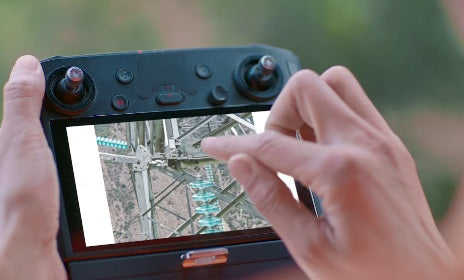
The AI SpotCheck feature.
The onboard AI recognises the subject of interest and identifies it in subsequent automated missions to ensure consistent framing. This means that when the mission is executed next time, the gimbal will automatically search the framed object to deliver accurate and consistent results.
Smart Pin and Track: This feature is only supported with the H20 Series, but utilising PinPoint allows you to mark an object in view and immediately receive its coordinates, while SmartTrack allows you to identify and follow moving subjects with the auto-zoom function while acquiring the subject's dynamic location.
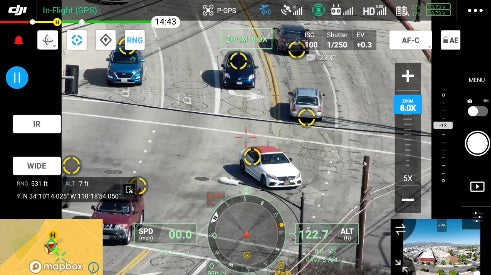
Track your subjects.
DJI M300 RTK v M200 Series V2 - Summary
Make no mistake, the DJI M300 RTK is a special drone. It is an aircraft which will help add a new level of efficiency to commercial drone missions.
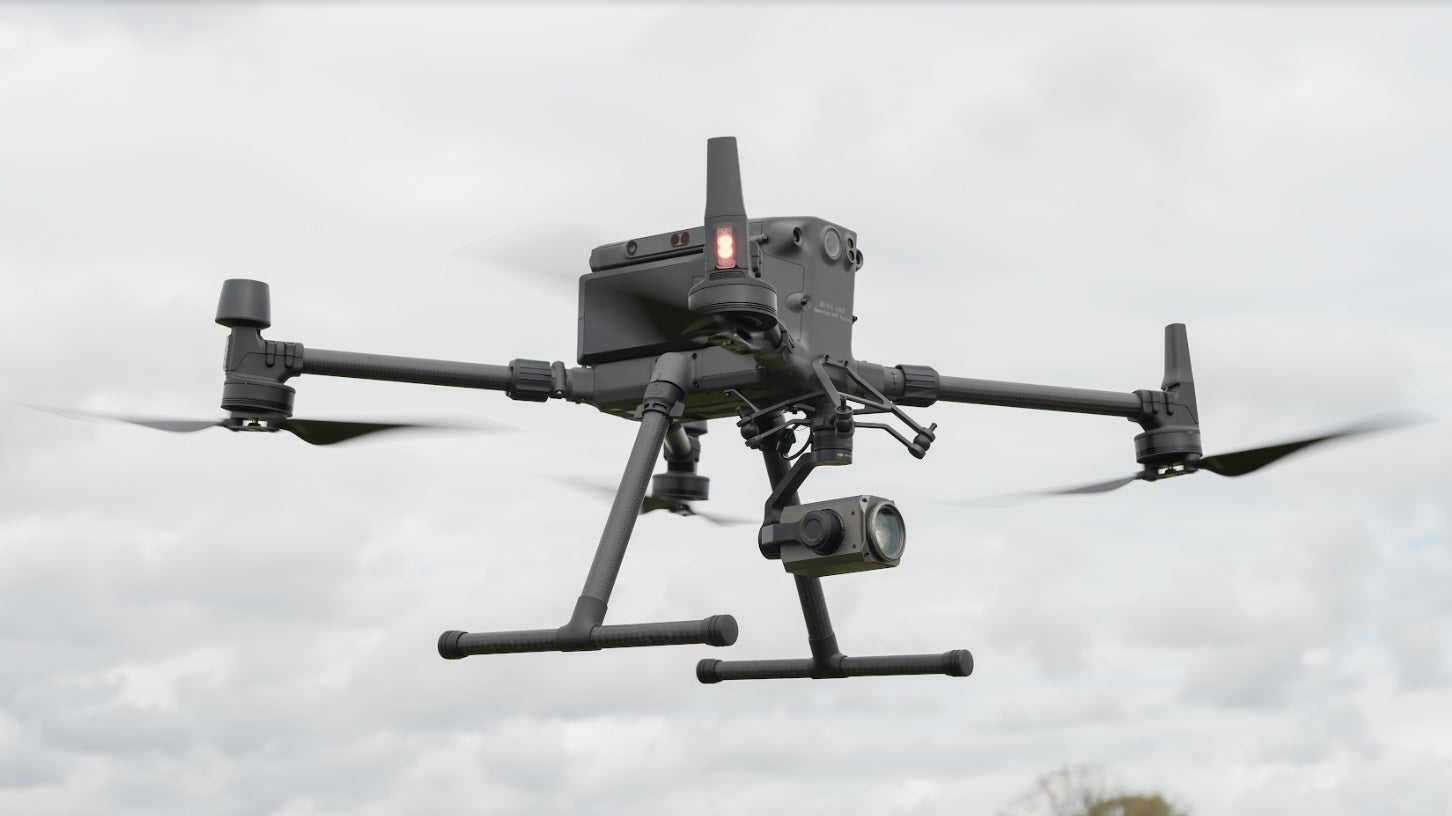
The DJI M300 RTK is a gamechanger.
After all, this isn't just a rebooted and polished M200, disguised in a new launch. DJI has genuinely used its expertise in the drone market to construct an aircraft which stands out from the rest, with mega flight time, sophisticated exclusive payloads, and an array of smart features, not to mention its extra tolerance in wet weather.
With that in mind, the DJI M300 RTK is sure to be at the top of the wishlist for enterprises who are already utilising drones, or are looking to start a drone programme.
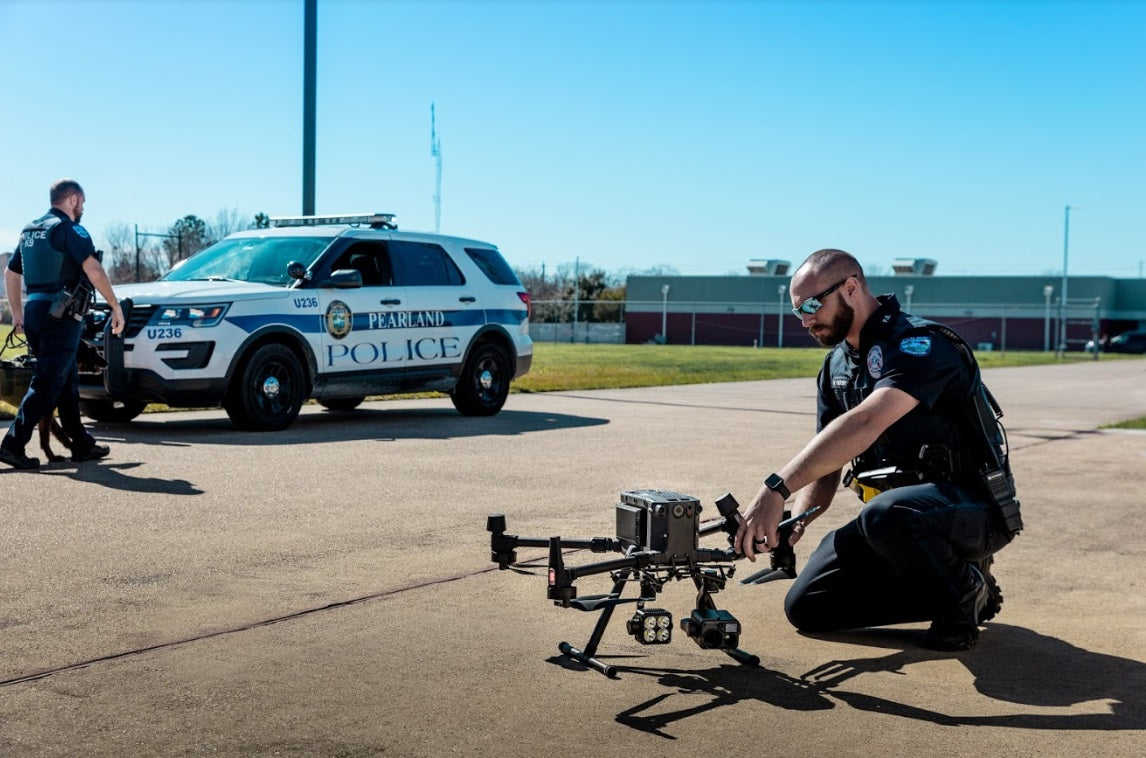
This isn't to say that the drones in the M200 Series V2 don't have their uses. After all, these platforms are still high-class, rugged and robust machines designed especially for commercial use. And if you are deploying your M210 RTK with an X7 sensor for surveying, or any other mission, then it might well be prudent to stick with this solution.
Also, it is important to highlight that the M300 RTK is not a replacement for the M200 Series V2; rather the M200 range will all continue.
But, there's no doubt that the new M300 RTK sets the bar very high and looks set to become the jewel in the crown of the commercial drone scene.
